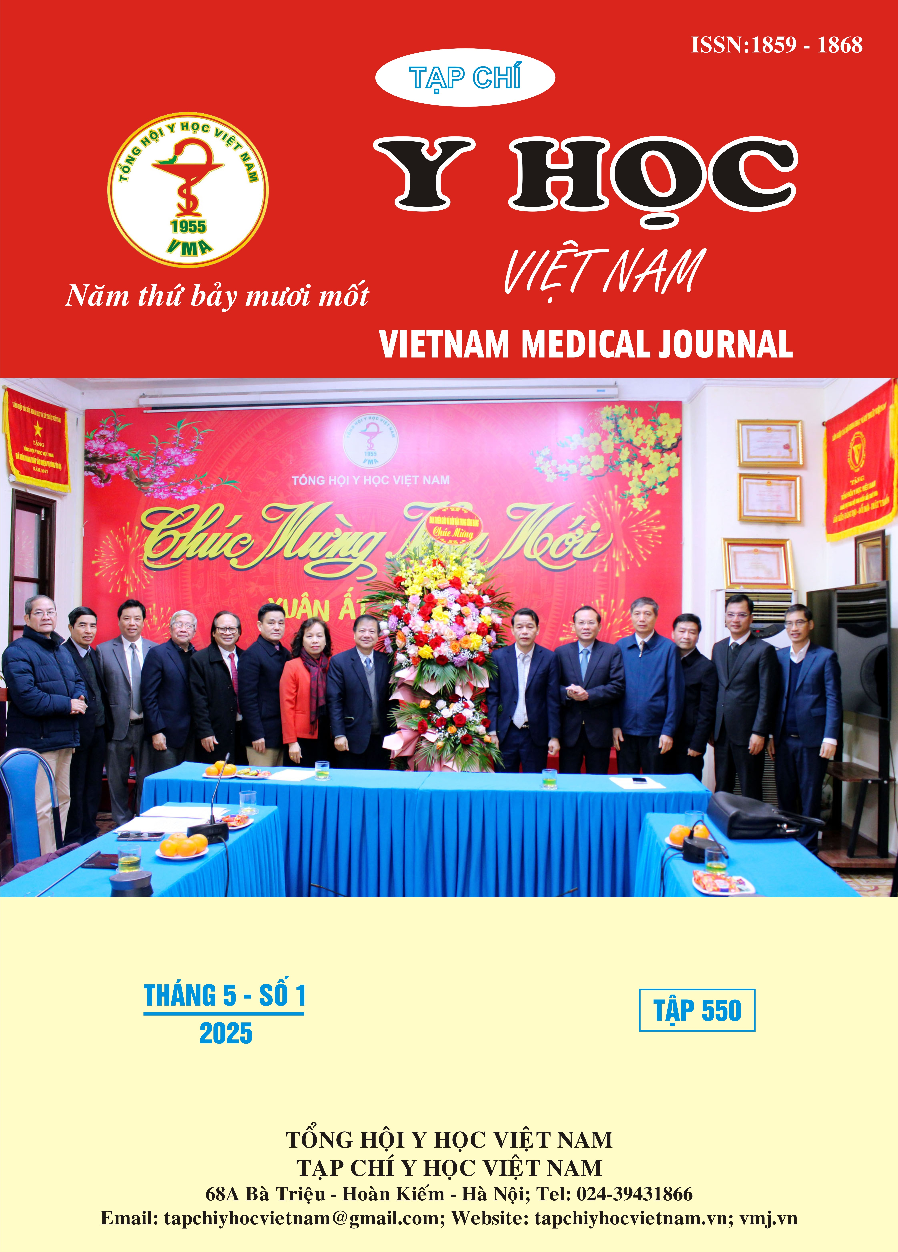SCREENING OF BK VIRUS LOAD IN PLASMA AND URINE IN FIRST THREE MONTHS IN KIDNEY TRANSPLANT PATIENTS AT 103 MILITARY HOSPITAL
Main Article Content
Abstract
Objectives: This study aims to investigate BK viral loads in plasma and urine within three months after kidney transplantation. Patients and methods: A total of 80 patients who underwent kidney transplantation in the Organ Transplant Center, Military Hospital 103. Quantification of BK virus was performed using realtime – PCR at month 1, 2 and 3. Results and Discussion: Among 80 recipients of kidney transplants analyzed. The rate of BK viremia at months 1, 2 and 3 was 2.47%; 4.94% and 9.88%, respectively. The corresponding rate of BK virus in urine infection was 28.4%; 17.28% and 18.52%, respectively. The distribution of BK viral loads in blood and urine was related to the time of BK virus reactivation with a higher rate was observed at month 3 as compared with those at month 1 and 2 (p<0,001). There was no association between age, gender and glomerular filtration rate with the time of BK virus reactivation (p>0,05). BK virus loads in urine at month 3 were an independent risk factor for predicting the presence of BK viremia. Conclusion: This study indicated that prevalence of BK virus in blood and urine was highest at month 3 among recipients of renal transplant in Vietnam. The surveillance of BK virus within 3 months after transplantation helps to monitor and make appreciate therapeutic intervention for kidney transplant recipients.
Article Details
Keywords
BK vius, Renal Transplant
References
2. Dekeyser M, François H, Beaudreuil S, Durrbach A. Polyomavirus-Specific Cellular Immunity: From BK-Virus-Specific Cellular Immunity to BK-Virus-Associated Nephropathy? Front Immunol. 2015;6:307.
3. Ziedina I, Folkmane I, Chapenko S, Murovska M, Sultanova A, Jushinskis J, et al. Reactivation of BK Virus in the Early Period After Kidney Transplantation. Transplantation Proceedings. 2009 Mar 1;41(2):766–8.
4. Grellier J, Hirsch HH, Mengelle C, Esposito L, Hebral AL, Bellière J, et al. Impact of donor BK polyomavirus replication on recipient infections in living donor transplantation. Transplant Infectious Disease. 2018;20(4):e12917.
5. Bressollette-Bodin C, Coste-Burel M, Hourmant M, Sebille V, Andre-Garnier E, Imbert-Marcille BM. A prospective longitudinal study of BK virus infection in 104 renal transplant recipients. Am J Transplant. 2005 Aug;5(8):1926–33.
6. Bagchi S, Gopalakrishnan V, Srivastava SK, Upadhayay A, Singh G, Bhowmik D, et al. BK polyomavirus infection after renal transplantation: Surveillance in a resource-challenged setting. Transplant Infectious Disease. 2017;19(6):e12770.
7. Funahashi Y, Kato M, Fujita T, Tsuruta K, Inoue S, Gotoh M. Correlation between urine and serum BK virus levels after renal transplantation. Transplant Proc. 2014;46(2):567–9.
8. Kiên TQ, Vũ NQ, Hằng TTT, Anh NX, Tuấn NV, Xinh TH, et al. Nghiên cứu một số đặc điểm nhiễm BK virus ở bệnh nhân sau ghép thận. In: Tạp chí Y Dược học Quân sự [Internet]. 2024 [cited 2025 Apr 20]. p. 154–64. Available from: https://jmpm.vn/index.php/jmpm/article/view/978
9. Madden K, Janitell C, Sower D, Yang S. Prediction of BK viremia by urine viral load in renal transplant patients: An analysis of BK viral load results in paired urine and plasma samples. Transpl Infect Dis. 2018 Oct;20(5):e12952.


